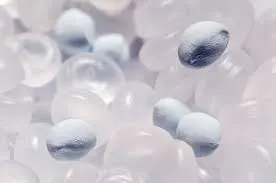The Importance of Drinking Water Purifying Chemicals
Access to clean drinking water is a fundamental human right and is essential for maintaining public health. However, in many parts of the world, water sources can be contaminated by various pollutants, including pathogens, heavy metals, and organic chemicals. To address these challenges, drinking water purifying chemicals play a pivotal role in ensuring safe and potable water for consumption.
Understanding Water Contamination
Before delving into purifying chemicals, it is crucial to grasp the types of contaminants that can affect drinking water. Biological contaminants, such as bacteria, viruses, and parasites, can lead to severe health issues like cholera, diarrhea, and other waterborne diseases. Chemical contaminants can stem from industrial discharges, agricultural runoff, and even household products, introducing harmful substances such as pesticides, heavy metals, and nitrates into water supplies.
The Role of Purifying Chemicals
Drinking water purifying chemicals help to eliminate these contaminants through various processes. Here are some commonly used types
1. Chlorine and Chloramine Among the most widely used disinfection agents, chlorine effectively kills bacteria and viruses present in water. It is straightforward to apply and relatively inexpensive. However, chlorine can react with organic matter in water, producing harmful byproducts known as trihalomethanes (THMs). Chloramine, a combination of chlorine and ammonia, is increasingly used as a secondary disinfectant because it produces fewer byproducts and provides longer-lasting protection against pathogens.
2. Ozone Ozone is a powerful oxidizing agent that effectively eliminates bacteria, viruses, and certain chemicals. Its use in water treatment has gained popularity due to its ability to break down organic materials without leaving harmful residuals as chlorine does. However, ozone must be generated on-site, which can increase operational costs and complexity.
drinking water purifying chemicals

3. Activated Carbon This purifying agent is not a disinfectant but is essential for removing organic compounds, chlorine, and bad tastes or odors from water. Activated carbon works through adsorption, where contaminants adhere to the surface of the carbon particles. This method is especially beneficial for treating water with high levels of organic contaminants, such as those found in agricultural runoff.
4. Reverse Osmosis (RO) Although not a chemical per se, RO uses a semi-permeable membrane to remove impurities from water. It can eliminate a wide range of contaminants, including heavy metals and salts. RO systems are often used for household water purification, providing a very high level of water quality.
5. Coagulants and Flocculants These chemicals, such as alum or polyaluminum chloride, help in the removal of suspended solids from water. They work by aggregating particles into larger clusters (flocs), which can then be removed through sedimentation or filtration. This process is critical in treating turbid water, making it suitable for further purification.
Environmental and Health Considerations
While purifying agents are integral to producing safe drinking water, there are environmental and health considerations to keep in mind. The use of chemicals like chlorine and ozone can lead to the formation of toxic byproducts, which may affect both human health and aquatic ecosystems if not managed properly. Thus, water treatment facilities must adhere to regulations and best practices to minimize risks.
Moreover, the use of chemical disinfectants should be coupled with proper monitoring and assessment of water quality. This ensures that the right doses are used and that potential contaminants are effectively removed without leaving harmful residues. Regular testing and community awareness play crucial roles in maintaining safe drinking water standards.
Conclusion
Drinking water purifying chemicals are vital components of modern water treatment systems, enabling communities to access safe drinking water and protect public health. As technology and research continue to advance, the methods and materials used in water purification are likely to evolve, providing even more effective and environmentally friendly solutions. By understanding the importance and application of these chemicals, we can contribute to a healthier and more sustainable future. Access to clean water is not just about purification; it's about safeguarding the health and future of every individual globally.

